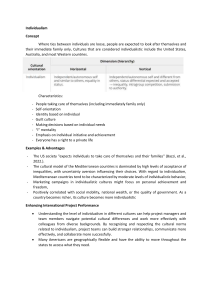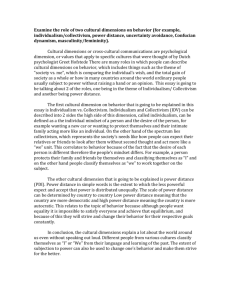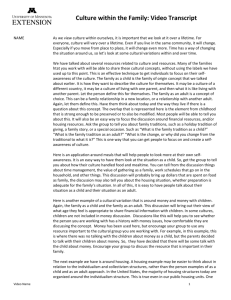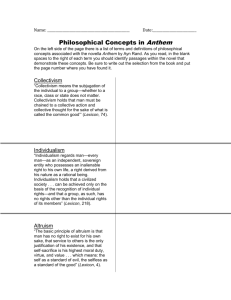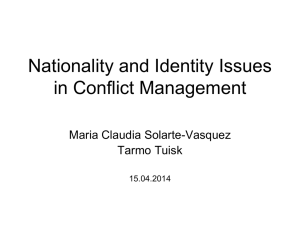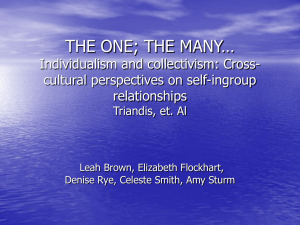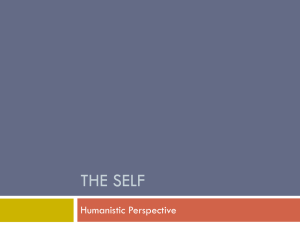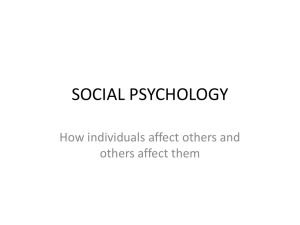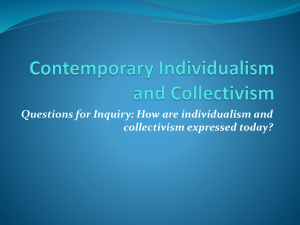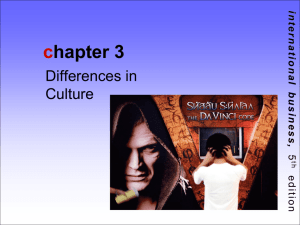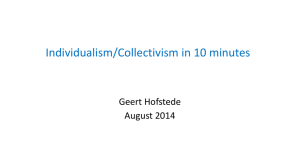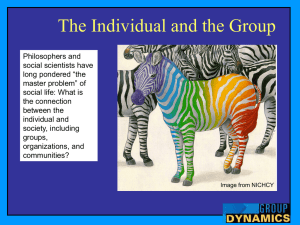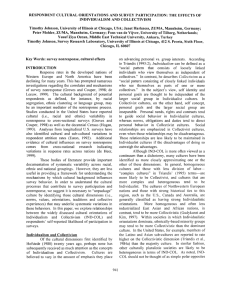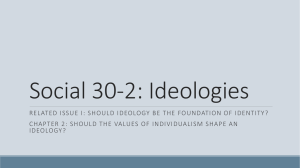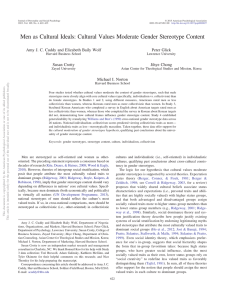INDIVIDUALISTIC VS. COLLECTIVISTIC CULTURES
advertisement
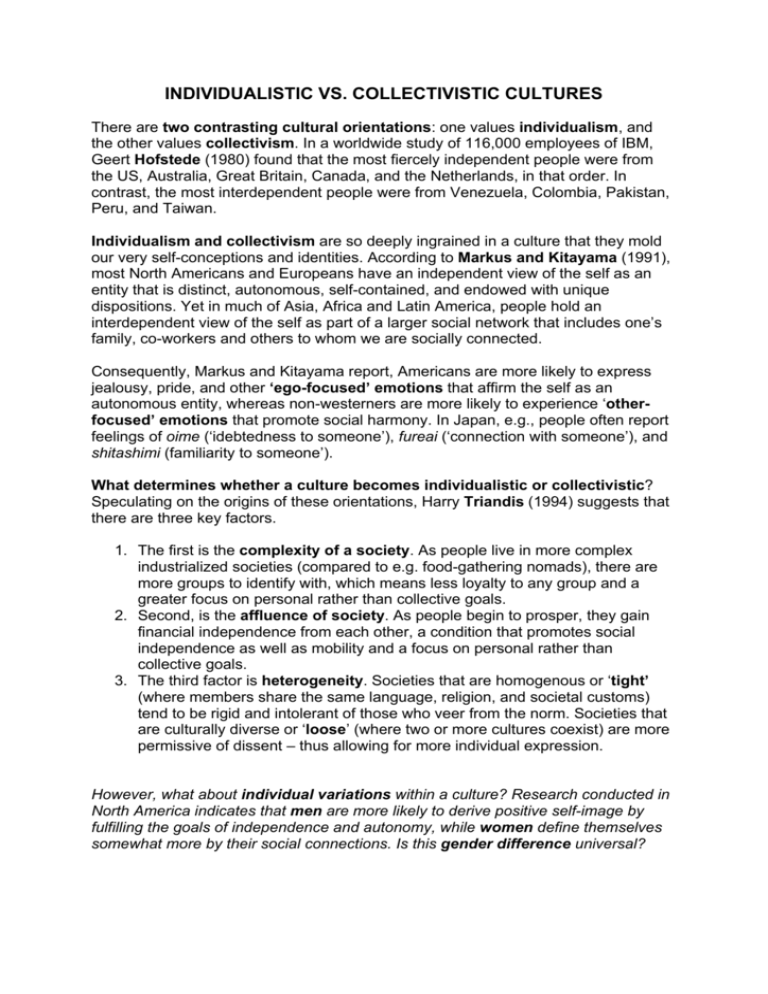
INDIVIDUALISTIC VS. COLLECTIVISTIC CULTURES There are two contrasting cultural orientations: one values individualism, and the other values collectivism. In a worldwide study of 116,000 employees of IBM, Geert Hofstede (1980) found that the most fiercely independent people were from the US, Australia, Great Britain, Canada, and the Netherlands, in that order. In contrast, the most interdependent people were from Venezuela, Colombia, Pakistan, Peru, and Taiwan. Individualism and collectivism are so deeply ingrained in a culture that they mold our very self-conceptions and identities. According to Markus and Kitayama (1991), most North Americans and Europeans have an independent view of the self as an entity that is distinct, autonomous, self-contained, and endowed with unique dispositions. Yet in much of Asia, Africa and Latin America, people hold an interdependent view of the self as part of a larger social network that includes one’s family, co-workers and others to whom we are socially connected. Consequently, Markus and Kitayama report, Americans are more likely to express jealousy, pride, and other ‘ego-focused’ emotions that affirm the self as an autonomous entity, whereas non-westerners are more likely to experience ‘otherfocused’ emotions that promote social harmony. In Japan, e.g., people often report feelings of oime (‘idebtedness to someone’), fureai (‘connection with someone’), and shitashimi (familiarity to someone’). What determines whether a culture becomes individualistic or collectivistic? Speculating on the origins of these orientations, Harry Triandis (1994) suggests that there are three key factors. 1. The first is the complexity of a society. As people live in more complex industrialized societies (compared to e.g. food-gathering nomads), there are more groups to identify with, which means less loyalty to any group and a greater focus on personal rather than collective goals. 2. Second, is the affluence of society. As people begin to prosper, they gain financial independence from each other, a condition that promotes social independence as well as mobility and a focus on personal rather than collective goals. 3. The third factor is heterogeneity. Societies that are homogenous or ‘tight’ (where members share the same language, religion, and societal customs) tend to be rigid and intolerant of those who veer from the norm. Societies that are culturally diverse or ‘loose’ (where two or more cultures coexist) are more permissive of dissent – thus allowing for more individual expression. However, what about individual variations within a culture? Research conducted in North America indicates that men are more likely to derive positive self-image by fulfilling the goals of independence and autonomy, while women define themselves somewhat more by their social connections. Is this gender difference universal?

